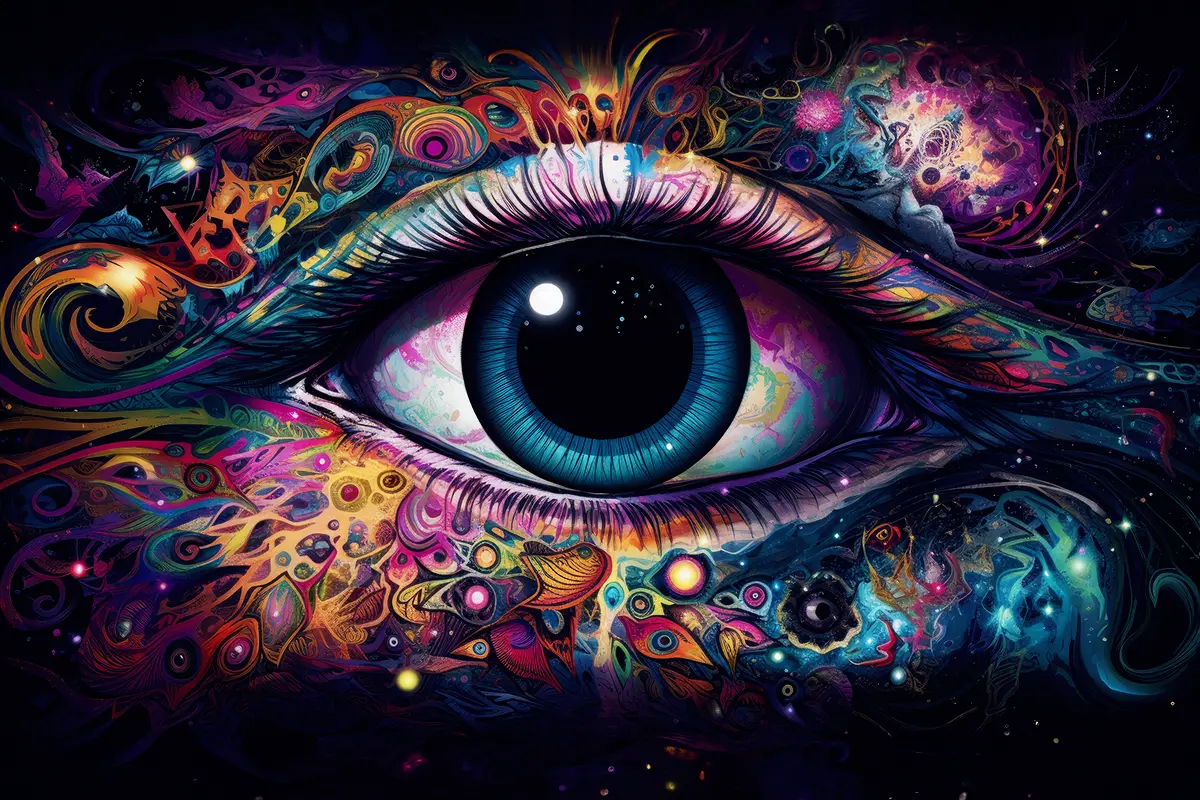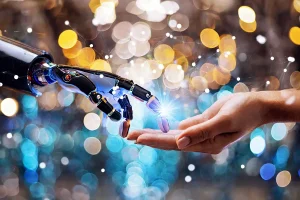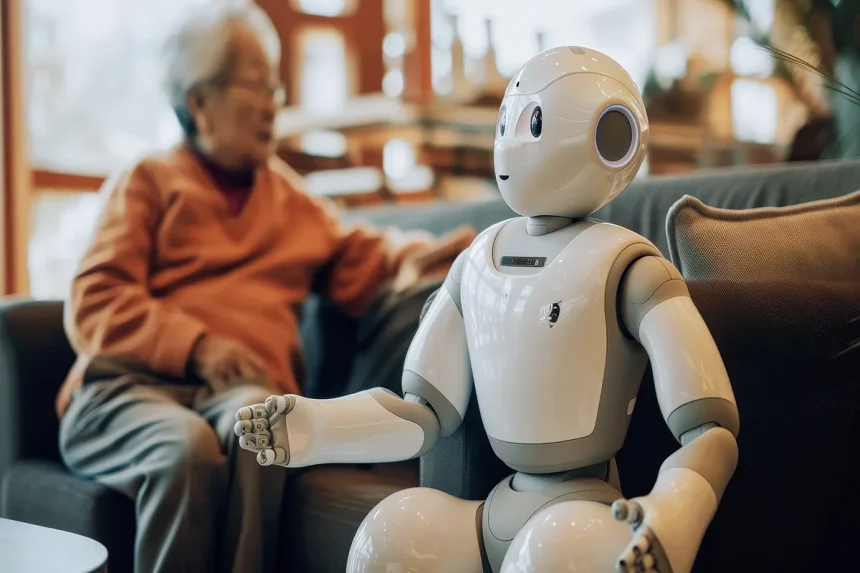Imagine waking up in a world where the person next to you might have a chip implanted in their brain, granting them instant access to all human knowledge. Or perhaps your coworker casually mentions their latest genetic modification, designed to eliminate the need for sleep. Welcome to the dawn of the transhumanism era, where the line between human and machine blurs like watercolors in the rain, and the definition of “humanity” is as fluid as quicksilver. Buckle up, folks, because we’re about to embark on a journey that makes science fiction look quaint and your high school biology textbook as outdated as a flip phone at a tech convention.
Overview
- Explore the cutting-edge technologies driving human enhancement.
- Examine the ethical dilemmas posed by transhumanism advancements.
- Investigate how transhumanism might shape human evolution.
- Dive into the philosophical questions raised by human augmentation.
- Analyze the potential societal impacts of widespread transhumanist technologies.
- Consider how we can navigate the challenges and opportunities of a transhuman future.
The Transhuman Vision: Enhancing Human Capabilities
Welcome to the playground of mad scientists and visionary futurists, where the human body is viewed less as a sacred temple and more as a fixer-upper with unlimited potential. The transhumanism vision of enhancing human capabilities is like a cosmic shopping spree, where we get to pick and choose upgrades for our minds and bodies as if we’re customizing a video game character. Only instead of extra lives or magic spells, we’re talking about superhuman intelligence, physical augmentations that would make Captain America look like a couch potato, and the tantalizing possibility of cheating death itself.
Let’s start our tour of this brave new world with cognitive enhancement, shall we? We’re not just talking about popping smart drugs like they’re candy (although that’s certainly part of it). No, we’re venturing into the realm of neural implants and brain-computer interfaces that promise to turn your mind into a supercomputer. Imagine having the entirety of human knowledge at your mental fingertips, or being able to download skills like Neo in The Matrix. “I know kung fu” could become less of a movie quote and more of a casual statement after your latest brain upgrade.
But why stop at the neck? Physical augmentation is where things get really interesting – or terrifying, depending on your perspective. We’re rapidly moving beyond simple prosthetics into the realm of cybernetic enhancements that could give us Transhuman strength, speed, and senses. Want eyes that can see in infrared? Fancy a set of arms that can lift a car? How about legs that can outrun a cheetah? In the transhumanism future, the body becomes a canvas for technological artistry, where the only limit is our imagination (and perhaps our wallet – these upgrades probably won’t come cheap).
Now, let’s talk about the elephant in the room—or, should I say, the immortal jellyfish in the petri dish. Life extension technologies are the holy grail of transhumanism, promising to extend our lifespans indefinitely. We’re not just talking about adding a few years here and there; we’re looking at the possibility of biological immortality. Telomere extension, senescent cell clearing, organ printing – these aren’t just buzzwords, they’re the potential keys to unlocking eternal youth. It’s like finding the cheat code for unlimited lives, but in the game of actual, you know, life.
But perhaps the most mind-bending aspect of the transhumanism vision is the merging of mind and machine through brain-computer interfaces. This isn’t just about controlling computers with your thoughts (although that’s cool enough on its own). We’re talking about a future where the boundary between your brain and the digital world becomes as permeable as a sieve. Imagine being able to backup your memories to the cloud, or directly connecting your mind to artificial intelligence. It’s like upgrading your brain to have permanent, high-speed Wi-Fi, with all the incredible possibilities (and terrifying implications) that entails.
As we stand on the precipice of these transhumanism technologies, we must ask ourselves some fundamental questions. Are we enhancing our humanity, or transcending it entirely? In our quest to become “better,” are we at risk of losing what makes us uniquely human? And perhaps most pressingly, as we gain the power to reshape our bodies and minds, how do we ensure that we’re changing ourselves for the better, rather than just for the sake of change?
The transhumanism vision of enhanced human ai capabilities is a double-edged sword, promising unparalleled advancements while simultaneously challenging our very conception of what it means to be Transhuman. It’s a future that’s as exciting as it is terrifying, as full of potential as it is fraught with peril. As we move forward into this uncharted territory, we must do so with our eyes wide open, fully aware of both the incredible possibilities and the profound responsibilities that come with the power to reshape humanity.
So, as we embark on this journey of Transhuman enhancement, let’s remember: with great power comes great responsibility – and possibly a hefty user manual for your new cybernetic implants.
Food for Thought: If you could safely enhance one aspect of your physical or cognitive abilities beyond current Transhuman limits, what would you choose and why? How might this enhancement change your life and your perception of what it means to be human?
Ethical Implications of Human Enhancement
Buckle up, moral philosophers and armchair ethicists, because we’re about to dive headfirst into the ethical quagmire of human enhancement. It’s a landscape where the lines between right and wrong are about as clear as mud, and every step forward in technology seems to open up a Pandora’s box of ethical dilemmas. Welcome to the world where “playing God” isn’t just a figure of speech, but a daily reality in labs and tech companies around the globe.
Let’s start with the elephant in the room – or should I say, the genetically enhanced elephant with superhuman intelligence. The equality dilemma in transhumanism is about as thorny as a rosebush in a balloon factory. On one hand, we have the tantalizing promise of eradicating diseases, extending lifespans, and boosting Transhuman capabilities beyond our wildest dreams. Sounds great, right? But here’s the twist: What happens when these enhancements come with a price tag that makes a luxury yacht look affordable in comparison?
We’re potentially looking at a future where the gap between the haves and the have-nots isn’t just about material wealth, but about fundamental human capabilities. Imagine a world where the rich can buy their children enhanced intelligence, physical prowess, and extended lifespans, while the rest of humanity is left in the biological dust. It’s like creating a new species of superhumans, with good old Homo sapiens relegated to the evolutionary bargain bin. The potential for social disparity isn’t just alarming – it’s downright dystopian.
But wait, there’s more! Let’s talk about identity and authenticity in a post-human world. When we can edit our genes, augment our bodies, and enhance our minds, what does it mean to be “authentically” human? It’s like trying to define the original ship in the Ship of Theseus paradox, only instead of planks, we’re replacing parts of our very being. At what point do we stop being “us” and become something… else? And in a world where everyone can be “perfect,” what happens to the beautiful diversity and imperfections that make us uniquely human?
Now, let’s dive into the legal and moral minefield of enhanced Transhuman rights. When we create beings with superhuman abilities, do they get super-rights to go along with them? Or do we risk creating a class of second-class citizens – either the enhanced or the non-enhanced, depending on how society shakes out? It’s like trying to rewrite the constitution, but instead of addressing 18th-century concerns, we’re grappling with the rights of cyborgs and genetically modified humans. Good luck fitting that on a parchment scroll.
And of course, we can’t discuss the ethics of transhumanism without addressing the granddaddy of all ethical quandaries: are we playing God? When we start redesigning human biology, we’re not just fixing what’s broken – we’re fundamentally altering the blueprint of humanity. It’s like being handed the source code of Transhuman existence and deciding to do a major rewrite. The potential for good is enormous, but so is the potential for catastrophic errors. One misplaced genetic semicolon, and we might accidentally create a race of hyper-intelligent, immortal beings with a penchant for world domination. Oops.
As we grapple with these ethical implications, we must ask ourselves some profound questions. How do we balance the potential benefits of human enhancement with the risks of exacerbating social inequalities? Can we find a way to embrace the possibilities of transhumanism while still preserving the essence of what makes us human? And perhaps most importantly, who gets to make these decisions that will shape the future of our species?
The ethical challenges posed by transhumanism are not just academic exercises – they’re urgent questions that we need to address as a society. We’re standing at a crossroads where the decisions we make today will shape the future of humanity for generations to come. It’s a responsibility that’s as exciting as it is terrifying, as full of potential as it is fraught with peril.
So, as we navigate these turbulent ethical waters, let’s remember: the goal isn’t just to enhance humanity, but to do so in a way that upholds our highest values and aspirations. Because in the end, the most important enhancement we can make isn’t to our bodies or our minds, but to our capacity for wisdom, compassion, and foresight.
Ethical Dilemma: You’re given the power to implement one transhuman enhancement technology worldwide, free and accessible to all. However, this technology will also irreversibly change an aspect of Transhuman biology or psychology. What enhancement would you choose, and how would you justify the permanent change to humanity?

Transhumanism and the Future of Human Evolution
Strap in, fellow primates, because we’re about to take a wild ride down the evolutionary highway, where the destination is anyone’s guess and the speed limit is… well, there is no speed limit. Welcome to the future of human evolution, transhumanist style, where Darwin’s theory gets a Silicon Valley upgrade and natural selection is about as outdated as a flip phone at a tech convention.
Let’s kick things off with the ultimate evolutionary smackdown: natural versus directed evolution. In one corner, we have good old Mother Nature, with her tried-and-true method of random mutations and survival of the fittest. In the other corner, we have the new kid on the block: directed evolution, where we grab the steering wheel of our genetic destiny and floor it. It’s like comparing a leisurely Sunday drive to a Formula One race – sure, they’re both forms of transportation, but one gets you to the future a whole lot faster (and with more neon lights).
Directed evolution isn’t just about fixing genetic diseases or enhancing desirable traits. We’re talking about the potential to fundamentally redesign the human genome, creating new capabilities that nature never dreamed of. Want gills to explore the ocean depths? How about photosynthetic skin for those long space voyages? In the world of directed evolution, the human body becomes a biological LEGO set, with endless possibilities for recombination and enhancement. It’s exciting, it’s terrifying, and it makes your high school biology textbook look like a stone tablet in comparison.
But hold onto your neurons, because we’re about to dive into the deep end of the evolutionary pool: the Singularity. This is the hypothetical point where artificial intelligence surpasses human intelligence, and all bets are off. We’re not just talking about really smart computers here – we’re envisioning a future where the line between human and machine consciousness blurs to the point of irrelevance. Imagine a world where you can upload your mind to a computer, merge your consciousness with AI, or distribute your thoughts across a network of connected devices. It’s like the ultimate cosmic brain upgrade, where your mind becomes as fluid and expandable as the cloud.
The implications of the Singularity for human evolution are mind-boggling. We could be looking at a future where biological evolution becomes obsolete, replaced by a form of digital or hybrid evolution that operates at the speed of thought. It’s like hitting the fast-forward button on the evolutionary process, catapulting us into a future that’s as alien to us now as smartphones would be to our cave-dwelling ancestors.
But why stop at Earth? As we set our sights on the stars, transhumanism offers tantalizing possibilities for adapting humans to the harsh realities of space colonization. Need to survive the radiation of interstellar travel? There might be a gene for that. Want to thrive in the low gravity of Mars? Time to redesign the human skeletal structure. The cosmos becomes our playground, and the human body our spaceship, infinitely adaptable to the challenges of extraterrestrial environments. It’s like evolution on steroids, with a side of cosmic radiation.
As we contemplate these possibilities, we must grapple with some fundamental questions about the nature of humanity and our place in the universe. If we can directly control our evolutionary path, what does it mean to be human? Are we creating a new species, or simply fulfilling the potential that was always latent within us? And as we gain the power to reshape ourselves at will, how do we ensure that we don’t lose the essence of what makes us human in the first place?
The future of human evolution in the transhuman era is a canvas of limitless possibilities, where the boundaries of biology, technology, and consciousness blur into a technicolor dreamscape of potential. It’s a future that’s as exciting as it is uncertain, as full of promise as it is fraught with perils.
So, as we stand on the brink of this evolutionary revolution, let’s remember: the power to shape our destiny comes with the responsibility to do so wisely. Because in the end, the most important evolution isn’t just in our genes or our technology, but in our capacity for wisdom, empathy, and foresight.
Thought Experiment: Imagine you’re part of a team designing humans for colonization of a distant planet with very different conditions from Earth. What biological or technological enhancements would you propose to adapt humans to this new environment? How might these changes affect the colonists’ perception of their own humanity?
Philosophical Challenges in the Transhuman Era
Ladies and gentlemen, philosophers and deep thinkers, prepare to have your minds not just blown, but utterly disintegrated and reassembled in ways that would make Socrates spill his hemlock. Welcome to the philosophical funhouse of the transhuman era, where the nature of consciousness is up for grabs, reality is whatever we code it to be, and the meaning of life gets a software update more often than your smartphone.
Let’s dive headfirst into the deep end of the metaphysical pool, shall we? First stop: consciousness and self in the age of enhanced minds. When we can upgrade our brains like computer hardware, download memories like files, and potentially transfer our consciousness to machines, what does it mean to be “you”? It’s like trying to find the ghost in the machine, only to realize the ghost is running multiple instances of itself across a distributed network. Are you still you if your consciousness is spread across multiple platforms? If you upload your mind to a computer, is the digital version really you, or just a very convincing copy? It’s enough to give Descartes a migraine.
And let’s not even get started on the nature of reality in a technologically altered world. When we can seamlessly blend the digital and physical, augment our senses beyond their natural limits, and potentially live in fully immersive virtual worlds, what is “real” anyway? It’s like “The Matrix,” but instead of being trapped in a simulation, we’re voluntarily diving into multiple realities of our own creation. When your perception of the world can be altered with a thought or a software update, the line between objective reality and subjective experience becomes about as clear as mud in a sandstorm.
Now, here’s where things get really interesting (or heretical, depending on your perspective): transhumanism and religion. How do we reconcile faith with the ability to fundamentally alter human nature? It’s like trying to update the operating system of spirituality for the digital age. Some see transhumanist technologies as a way to fulfill divine potential, a sort of technological path to transcendence. Others view it as the ultimate act of hubris, a modern-day Tower of Babel. Either way, it’s forcing us to reevaluate our relationship with the divine in an era where we’re gaining godlike powers over our own biology.
But perhaps the most mind-bending philosophical challenge of the transhuman era is the question of the meaning of life in a post-human existence. When we can potentially live indefinitely, enhance our capabilities beyond natural limits, and blur the lines between biological and digital existence, what gives life purpose? It’s like being handed the cheat codes to the game of life, only to realize that infinite power doesn’t necessarily equal infinite meaning.
Do we find purpose in endless self-improvement, constantly upgrading ourselves like the latest smartphone model? Or does the elimination of natural limits paradoxically limit our capacity for finding meaning in struggle and growth? When death becomes optional, does life lose its precious finitude that gives it urgency and meaning? It’s like trying to write a story with no end, where the challenge becomes not reaching the conclusion, but finding reasons to keep turning the pages.
As we grapple with these philosophical conundrums, we must ask ourselves some fundamental questions. If we can redesign our minds and bodies at will, what remains as the core of our identity? In a world of potentially infinite possibilities, how do we choose a path and find meaning? And perhaps most pressingly, as we gain the power to reshape the very foundations of human existence, what values and principles should guide us?
The philosophical challenges of the transhuman era aren’t just academic exercises – they’re urgent questions that will shape the future of human (or post-human) existence. We’re not just updating our bodies and minds; we’re potentially rewriting the very nature of what it means to be conscious, to be real, to be human.
So, as we navigate these turbulent philosophical waters, let’s remember: the goal isn’t just to enhance our capabilities, but to deepen our understanding of ourselves and our place in the universe. Because in the end, the most important upgrade we can make isn’t to our hardware or software, but to our capacity for wisdom, empathy, and meaning-making in a world of endless possibilities.
Philosophical Puzzle: If you could design the perfect mind, free from cognitive biases and limitations, would you? What biases or “flaws” might you choose to keep, and why? How might this perfect mind change your perception of free will, creativity, and the human experience?
The Societal Impact of Transhumanist Technologies
Fasten your seatbelts, social scientists and futurists, because we’re about to embark on a roller coaster ride through the societal landscape of a transhuman world. It’s a place where the fabric of society is being rewoven with threads of carbon nanotubes and streams of data, and where the social contract might need to be rewritten in quantum code. Welcome to a future where “keeping up with the Joneses” might mean competing with their latest neural implants or genetically enhanced offspring.
Let’s start with the elephant in the room – or should I say, the genetically modified, cognitively enhanced elephant that can speak six languages and solve complex equations. The impact of transhumanist technologies on social inequality has the potential to make our current wealth gaps look like a minor crack in the sidewalk. Imagine a world where the rich can buy not just better education and healthcare, but fundamentally superior cognitive abilities and extended lifespans. We’re talking about the potential creation of a literally superior class of humans. It’s like social Darwinism on steroids, with a side of neural lace.
But it’s not all doom and gloom in this brave new world. Transhumanist technologies also hold the promise of leveling the playing field in unprecedented ways. Imagine a future where disabilities can be completely overcome, where education is as simple as downloading knowledge directly to your brain, where productivity-enhancing technologies allow everyone to achieve more with less effort. It’s a world of boundless potential, where the limits of human achievement are constantly being rewritten. The question is: will these technologies be equitably distributed, or will they create new, even more insurmountable barriers between the haves and have-nots?
Now, let’s talk about the workplace in a transhuman future. When your coworker might be a genetically enhanced superhuman, an AI, or a human-AI hybrid, what does that mean for job competition, workplace dynamics, and the very nature of work itself? We might be looking at a future where the concept of “human resources” takes on a whole new meaning, and where the skills gap becomes a skills chasm of almost unfathomable proportions. It’s like trying to compete in the job market with a abacus when everyone else has a quantum computer for a brain.
And what about family and relationships in this transhumanist future? When you can design your children’s genetic makeup, when age gaps can be rendered meaningless by life extension technologies, when the very nature of human emotion and attraction can potentially be altered or enhanced, what becomes of love, family, and human connection? It’s like trying to navigate the already complex world of human relationships with an entirely new rulebook – one that’s being constantly updated and patched like a finicky software program.
Let’s not forget about the impact on governance and democracy. When citizens can enhance their cognitive abilities, when AI can predict and influence voting behaviors with unprecedented accuracy, when the very nature of human rationality and decision-making can be augmented or altered, what becomes of the democratic process? It’s like trying to run a 18th-century style democracy in a world where the citizens are rapidly evolving beyond the system’s wildest imaginations.
As we contemplate these societal shifts, we must grapple with some fundamental questions. How do we ensure that the benefits of transhumanist technologies are equitably distributed? How do we maintain social cohesion in a world of potentially vast capability differences? And perhaps most importantly, how do we preserve the core values of human dignity, freedom, and equality in a post-human world?
The societal impact of transhumanist technologies is not just a matter of adapting our social structures to new realities – it’s about fundamentally reimagining what society could and should be in a world where the boundaries of human potential are constantly expanding. It’s a challenge that’s as exciting as it is daunting, as full of potential as it is fraught with risks.
So, as we stand on the brink of this transhuman future, let’s remember: the goal isn’t just to create a society that can accommodate these new technologies, but to shape a world that uses them to uplift all of humanity. Because in the end, the true measure of our advancement won’t be the height of our technological achievements, but the depth of our compassion and the breadth of our inclusivity.
Societal Scenario: Imagine a world where life extension technologies are available but strictly rationed due to resource constraints. How would society decide who gets access? What criteria would be fair? How might this impact social structures, family dynamics, and individual life choices?
Navigating the Transhuman Future: A Roadmap for Humanity
Alright, intrepid explorers of the post-human frontier, it’s time to unfold our map (or rather, activate our holographic 3D interactive future-projection device) and chart a course through the wild, uncharted territories of our transhuman future. Buckle up, because this journey makes Lewis and Clark’s expedition look like a stroll through the park – a park where the trees might be sentient and the squirrels have PhD’s in quantum mechanics.
First stop on our grand tour: Education and Preparation. In a world where the job market might be as alien as the surface of Mars (which, incidentally, might be a viable job location in this future), how do we prepare the next generation? We’re not just talking about updating the curriculum – we’re talking about a complete overhaul of the concept of education. When knowledge can be downloaded directly into our brains, the emphasis shifts from memorization to application, from knowing to understanding. It’s like trying to prepare students for a test where the questions are unknown and constantly changing. The key skill becomes not what you know, but how quickly you can learn, adapt, and innovate.
Next up: Ethical Framework and Governance. As we gain the power to reshape the very foundations of human biology and cognition, we need a ethical framework more robust than vibranium and more flexible than a yoga master doing hot yoga in a sauna. We’re not just updating a few laws here and there; we’re potentially rewriting the entire social contract for a post-human world. How do we govern a society where citizens might have wildly different physical and cognitive capabilities? It’s like trying to create a fair sports league where some players are baseline humans, others are genetically enhanced superathletes, and a few might be AI-human hybrids who experience time differently. Good luck with that rulebook.
Let’s not forget about the Economic Transition. As we move into a world where artificial intelligence and automation can handle an ever-increasing share of traditional work, we need to fundamentally rethink our economic structures. Universal Basic Income? That’s just the tip of the iceberg. We might need to create entire new economic paradigms to account for a world where scarcity could become obsolete in some areas while new forms of scarcity emerge in others. It’s like trying to use monopoly money in a game of multidimensional chess – the old rules just don’t apply.
Now, here’s a crucial pit stop on our journey: Psychological and Social Support. As we enhance our bodies and minds, as we extend our lifespans and expand our capabilities, we’re going to need some serious psychological scaffolding. We’re talking about helping humans cope with potentially radical changes to their very nature, to their perception of self and reality. It’s like going through puberty, a mid-life crisis, and a existential philosophical awakening all at once, with a side of “oh, by the way, you might live forever.” We’re going to need therapists with some really specialized training.
Last but certainly not least: Global Cooperation and Regulation. In a world where a teenager in a garage could potentially create a supervirus or a rogue AI, we need global cooperation and regulation that makes the United Nations look like a kindergarten student council. We’re talking about creating frameworks to govern technologies that could alter the course of human evolution or even threaten our existence as a species. It’s like trying to get every country on Earth to agree on pizza toppings, except instead of arguing about pineapple, we’re debating the acceptable limits of human enhancement and AI development.
As we navigate this transhuman future, we must grapple with some fundamental questions. How do we balance progress and safety when the stakes are literally the future of our species? How do we ensure that these transformative technologies are used to benefit all of humanity, not just a privileged few? And perhaps most importantly, how do we maintain our humanity – our compassion, our creativity, our sense of purpose – in a world where the very definition of “human” is constantly evolving?
The road ahead is as daunting as it is exhilarating. We’re not just planning for the next few years or even decades; we’re charting a course that could determine the fate of our species for millennia to come. It’s a responsibility that’s as terrifying as it is awe-inspiring.
But here’s the thing: despite all the mind-machine technologies and paradigm-shifting changes we’ve discussed, the core of our journey remains fundamentally human. It’s about our hopes, our fears, our dreams for a better future. It’s about grappling with age-old questions of identity, purpose, and ethics in a new context.
As we stand on the brink of this transhuman future, let’s remember: the goal isn’t just to survive the changes that are coming, but to shape them in accordance with our highest values and aspirations. We have the opportunity to guide our own evolution, to transcend our limitations, and to explore realms of existence we can barely imagine.
So, fellow travelers on this grand adventure, I leave you with this thought: The future is not something that happens to us – it’s something we create. As we step into this brave new world of transhumanism, let’s do so with wisdom, with compassion, and with an unwavering commitment to the betterment of all.
Because in the end, whether we’re baseline, genetically enhanced superbeings, or consciousness uploaded to the cloud, we’re all in this together. And the greatest enhancement we can make isn’t to our bodies or our minds, but to our capacity for love, for wonder, and for the relentless pursuit of a better world for all.
Now, who’s ready to take the leap into tomorrow? Just remember to bring a towel – interdimensional travel can be messy.
Final Reflection: Imagine you’re tasked with creating a “Human Values Preservation Protocol” for a future where transhumanist technologies are widely adopted. What core human values or traits would you prioritize preserving as we enhance and alter our bodies and minds? How would you ensure these values remain central to our identity as we evolve beyond traditional definitions of humanity?
















